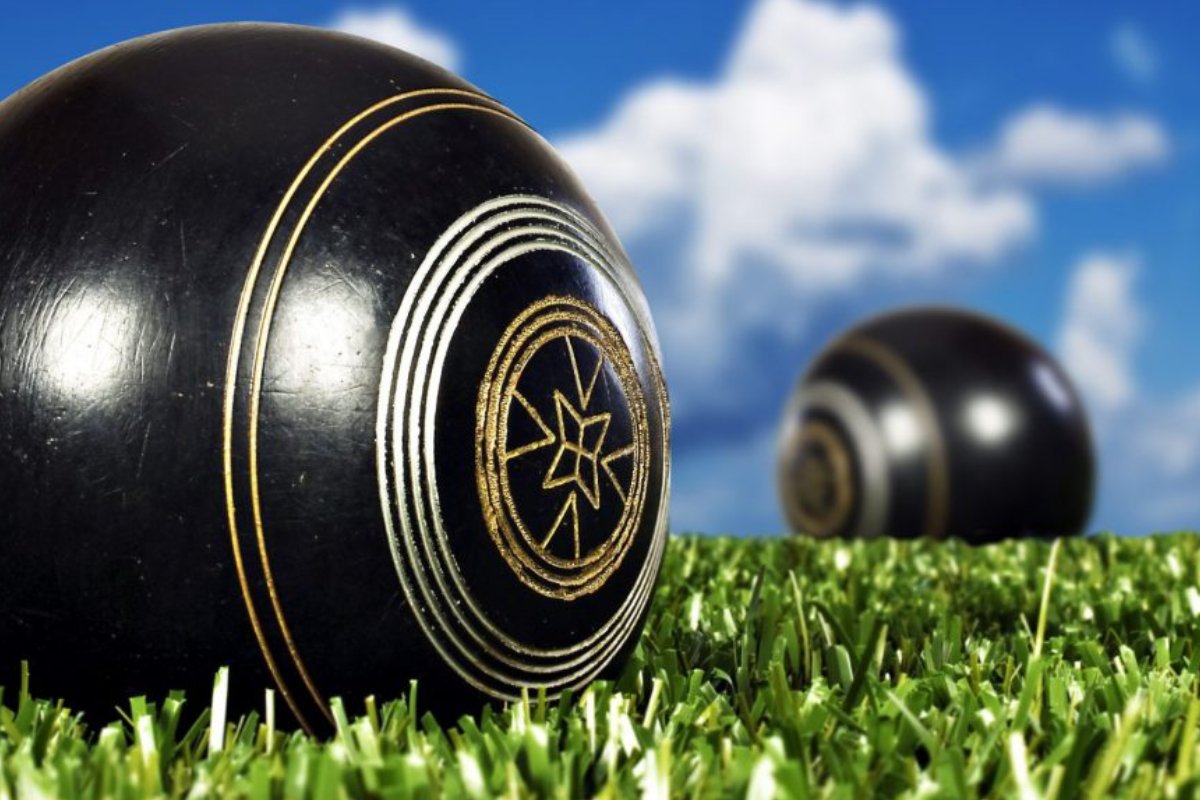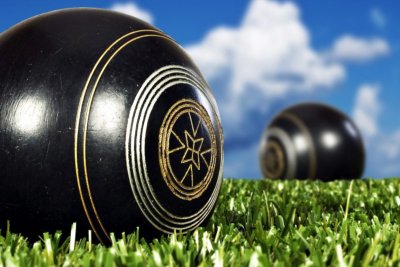Contact Lydney Bowling Club
Address:
Bathurst Park
Lydney
Gloucestershire
GL15 5DQ
Email: Lydney Bowling Club
Phone: 07886 563792
Crown green bowling is a variation of lawn bowls that is played on a crown green, which is a type of bowling green that is slightly convex in shape. The game is played by two teams of two players each, who take turns rolling their bowls towards a smaller ball called the jack. The object of the game is to get your bowls closer to the jack than your opponents' bowls.
Crown green bowling for the blind is played in a similar way to regular crown green bowling, with a few modifications to make it accessible to blind and partially sighted players. The most significant modification is that blind players are allowed to use a guide rail, which is a long, thin pole that runs along the length of the green. The guide rail helps the player to line up their shot and to judge the distance to the jack.
Blind players also have the option of using a sighted guide, who will stand behind the player and help them to line up their shot and to guide their bowl towards the jack.
Crown green bowling for the blind is a great way for blind and partially sighted people to get involved in sport and to socialize with others. It is a challenging game that requires skill, accuracy, and concentration.
Here are some of the benefits of playing crown green bowling for the blind:
- It is a great way to get exercise and to stay fit.
- It is a social activity that can help to build friendships and relationships.
- It is a challenging game that can help to improve hand-eye coordination and concentration.
- It is a fun and enjoyable activity that can help to reduce stress and anxiety.
If you are interested in playing crown green bowling for the blind, there are a number of resources available to help you get started. You can find information about clubs and leagues in your area by contacting your local blind sports organisation.
A History
Lawn bowls for the blind and visually impaired was introduced at international level by a South African doctor called Julius Sergay in the 1970’s. He raised funds for the first game in South Africa to be played on a Johannesburg green in 1963 which had six players. Less than 15 years later he founded the International Blind Bowlers Association and which now has more than a dozen member countries.
Bowls is not only a great game to take part in socially; it also helps improve confidence and general fitness of players.
In Scotland, bowling for the blind and visually impaired has been in existence since the 1950’s and the country’s first players were the Scottish Bowlers for the War Blinded, based in Edinburgh.
Visually Impaired Bowls England was founded in 1975 and is made up of more than 50 clubs and has around 600 members. Globally, there are 5,000 blind and partially sighted members of the International Association, which makes lawn bowls the largest outdoor activity for the blind in the world.
Lawn Bowling for the Blind – The Rules
Bowling clubs for the blind and visually impaired cannot take place without fully sighted volunteers, so there is always a call for people to help at local clubs and it is well worth inquiring if you want to become a volunteer.
It is a very skilful game and involves the use of the same green and also uses the same lawn bowls, clothing and equipment as fully sighted players.
Bowling for the blind and visually impaired follows the laws of the English Bowling Association, although there are some variations to the game.
One of these variations is that it involves the use of a thin strip or string that runs from ditch to ditch down the centre of the lane, so the bowler is better able to judge the angle according to the distance required.
When the jack (smaller ball) lands it is moved across to this string and the helper must inform the player of the distance of the jack to the mat.
Lawn bowls has long been a sport for all ages and abilities. Lawn bowling is not only played by able bodied and sighted people, but is also a popular sport for wheel chair users, the blind and partially sighted.
The game is played on a grass or synthetic surface called the bowling green. The object of lawn bowls is to throw bias balls so they stop as close as possible to a smaller bowl which is called a jack.
Although lawn bowls for the blind or partially sighted is not classified as an Olympic sport, the game is played world-wide with many high profile tournaments across the globe including the World Blind Bowling Championships, held every four years.
The last world tournament was held in Melbourne, Australia, and the next will take place in Worthing, England, in July 2013. Scotland, England, Australia, New Zealand, South Africa and Zimbabwe will be among the countries completing.
We also sell a complete range of lawn bowls and equipment by leading names Taylor (Glasgow, Scotland) Henselite (Australian) and Drakes Pride (Liverpool, England). This includes markers, tape, grip wax, measures, measuring aids, rink twine, grip wax and gift vouchers.
Once the bowl has come to rest, the distance of the bowl to the jack is given in yards, feet and inches. The helper must also tell the player the position of the bowl in relation to the jack, using the hands of the clock; for instance, 12 o’clock would mean that the bowl was behind the Jack.
All players are to stand behind the jack or the mat so as not to distract the bowlers and observers must maintain silence. The game also specifies that, other than the centring strings, no other mechanical visible aids should be used.
Experienced blind and visually impaired players are extremely accomplished. Certainly, the world’s best are a match against even the best club level sighted bowls players.




